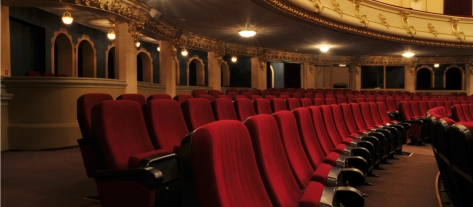
Governance in the cultural sector: which approach to choose?
Cultural Governance Code
In the first period after the presentation of the Cultural Governance Code in November 2018, many cultural organisations have been looking at what the new Code means for them. Proper organisation of management, supervision and accountability requires tailor-made solutions for every organisation. This process within the organisation is complex and often raises questions, such as:
- How do we keep a grip on our organisation, but also make optimum use of the creativity and flexibility of our employees?
- How do we divide our attention between daily issues and at the same time assess the longer-term opportunities and risks?
- What is the appropriate division of roles between the executive board and the supervisor?
Paradigm: 4 management tools towards good governance
Mazars introduces a paradigm that helps cultural organisations to answer this type of crucial questions. This is a relatively simple foundation for the design of governance. It also contains valuable input for an assessment framework for a supervisory board.
The model is based on four management tools:
| No. | Management tool: | Object: |
| 1 | Beliefs system | Inspiring mission and core values |
| 2 | Boundary system | Enforcement of the rules of the game |
| 3 | Diagnostic feedback system | Monitoring the achievement of agreed performances |
| 4 | Interactive feedback system | Open organisation dialogue to strengthen learning capacity, mitigate risks and seize opportunities |
The figure below shows how focus on the four different management tools helps to find a balance between 'Control' and 'Change ' and between 'Strategy' and 'Performance'.
Please note that these management tools only work well on a sufficiently solid foundation of basic internal control. An example of this is the separation of functions between those responsible for the theatre cash register and the financial administration.
| Strategie | Strategy | Kernwaarden | Core values |
| Grenzen en kaders | Boundaries and frameworks | Missie, visie en kernwaarden | Mission, vision and core values |
| Regels, normen en limieten | Rules, standards and maximum levels | Kansen en bedreigingen | Opportunities and threats |
| Prestatie | Performance | Risicomanagement en werkvloerbezoek door management | Risk management and workplace visits by management |
| Kritische prestaties | Critical performances | Checks en balances t.b.v. (stuur) informatie | Checks and balances for management information |
| Plannen, budgetten en KPI-dashboard | Plans, budgets and KPI dashboard |
Mazars (2018), based on 'Levers of control' by R. Simons (1995).
It is not an easy task to determine when the balance between the four management tools is right. This balance is different for each organisation, because it depends on, for example, the ambitions, the environment and the maturity of an organisation's internal control. In our experience, however, this model is an excellent tool for the step-by-step optimisation of the structure of governance. For instance, because everyone realises that the organisation is extremely enthusiastic about its core values and its artistic mission (beliefs), but that there is actually not enough attention for 'the figures' (diagnostic).
If we look at the division of roles between the supervisory board and executive board, a practical effect might be that the supervisory board focuses mainly on boundaries and beliefs and sets the key long-term objectives. Next, the executive board translates these strategic guidelines into an annual plan, monitors implementation (diagnostic control) and identifies and mitigates risks that could threaten the achievement of the objectives (interactive control).
What can Mazars do to help you?
Mazars has the expertise and experience to help cultural organisations with the practical implementation of the Cultural Governance Code by means of this Levers of Control paradigm:
- For instance, we offer support in preparing and implementing management regulations (which usually contain mainly boundaries) or a code of conduct that derives attention to rules (on, for example, social security and procurement) from core values and cultural vision (i.e. boundaries and beliefs).
- Mazars can also assist you with the further development of a strongly financially oriented dashboard towards a more 'balanced' dashboard, which also includes non-financial KPIs, such as information on public appreciation, risk management and innovation (diagnostics).
- In addition, we are happy to help you understand and manage your top 10 risks or explore opportunities to develop new working methods and services (interactive).
In short, Mazars will gladly contribute to the growing need of the cultural sector to further professionalise governance. We do this by sharing casuistry and knowledge. Through mutual partnerships between our service lines and the not-for-profit sector, we see many perspectives and opportunities to consult cultural organisations and assist them with their developments and ambitions to grow within a rapidly changing cultural sector. Together with you, we look forward to exploring the possibilities for further improving the balance in your organisation. Naturally, we will be happy to discuss this with you.






